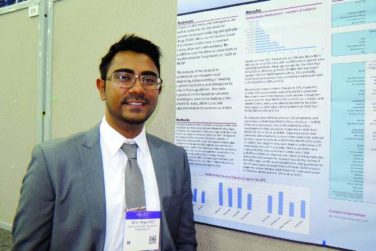FROM THE NEW ENGLAND JOURNAL OF MEDICINE
Among couples who have unexplained infertility, ovarian stimulation with letrozole doesn’t significantly reduce the rate of multiple gestation when compared with current standard ovarian stimulation, according to a report published online Sept. 24 in the New England Journal of Medicine.
Recent evidence suggested that aromatase inhibitors such as letrozole might be useful in some cases of infertility because they tend to stimulate monofollicular development, avoiding hyperstimulation of the ovary and thus multiple births. Researchers in the National Institute of Child Health and Human Development’s Cooperative Reproductive Medicine Network performed a randomized trial to determine whether letrozole would lower the rate of multiple gestations without reducing the likelihood of pregnancy: the Assessment of Multiple Intrauterine Gestations from Ovarian Stimulation ( AMIGOS ) study.
The trial involved 900 couples with unexplained infertility treated at 12 sites throughout the United States. The women all had regular menses and a normal uterine cavity with at least one patent fallopian tube, and the men all had semen specimens with at least 5 million sperm per milliliter.
The women were stratified by age and randomly assigned to receive subcutaneous injections of gonadotropin (301 patients), coated oral clomiphene tablets (300 patients), or coated oral letrozole tablets (299 patients) for up to four treatment cycles. A total of 746 couples completed the study, and dropout rates were similar across the three study groups, according to Dr. Michael P. Diamond of Georgia Regents University, Augusta, and his associates.
The primary outcome – the rate of multiple gestation among pregnancies in which fetal heart motion was confirmed on ultrasound at approximately 4-6 weeks – was not significantly lower with letrozole (9 of 67 pregnancies, 13%) than with a combined group of women receiving current standard therapy of gonadotropin or clomiphene (42 of 192 pregnancies, 22%), the investigators wrote ( N Engl J Med. 2015;373:1230-40. doi:10.1056/NEJMoa1414827 ).
However, the rate of multiple gestation was significantly higher with gonadotropin alone (32%) than with either letrozole (13%) or clomiphene alone (9%). And all the multiple gestations in the latter two groups were twins, while there were 10 sets of triplets in the gonadotropin group.
With letrozole, rates of conception, clinical pregnancy, and live birth were within the prespecified boundary for noninferiority to standard therapy, but they still were significantly lower. In particular, the rate of live birth was only 18.7% for letrozole, compared with 32.2% for gonadotropin and 23.3% for clomiphene.
There were no significant differences among the three study groups regarding time to conception, rates of loss of an established pregnancy, the timing of pregnancy loss, rates of placental abnormalities, mean birth weights of singleton pregnancies, gender distribution of the neonates, rates of congenital abnormalities, rates of neonatal complications, or rates of maternal complications.
The National Institutes of Health, the Eunice Kennedy Shriver National Institute of Child Health and Human Development, the National Center for Research Resources, the National Center for Advancing Translational Sciences, and the American Recovery and Reinvestment Act funded the study. Dr. Diamond reported ties to Advanced Reproductive Care, AbbVie, Bayer, and EMD Serono; his associates reported ties to numerous industry sources.




